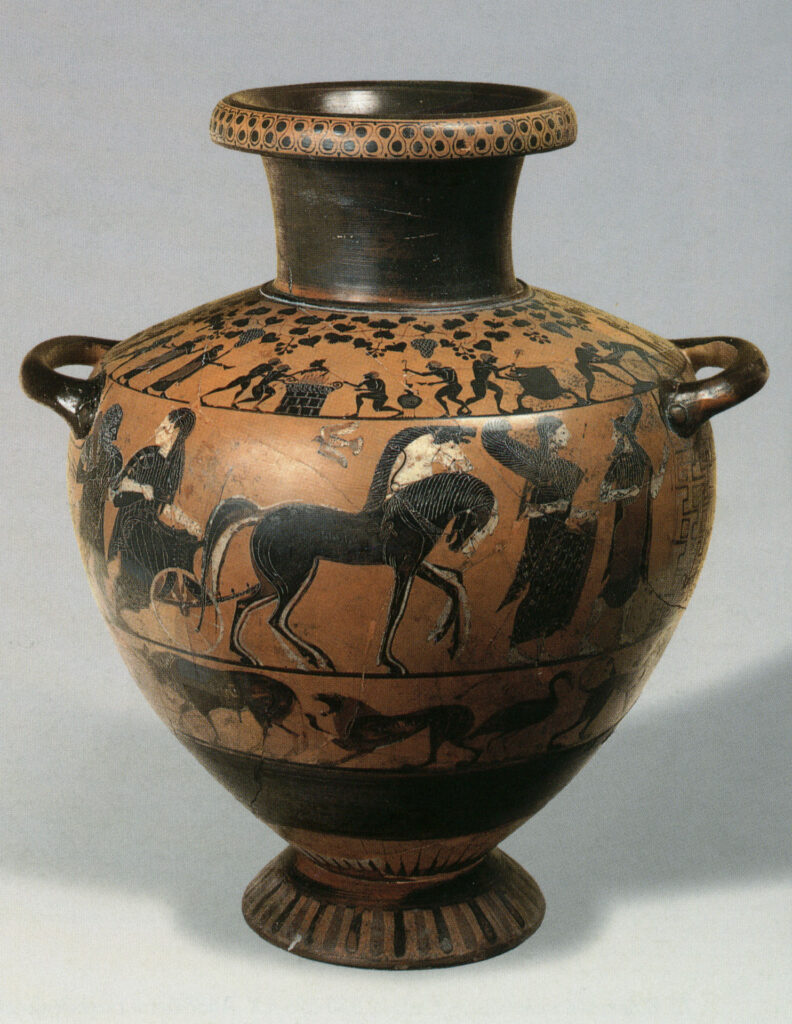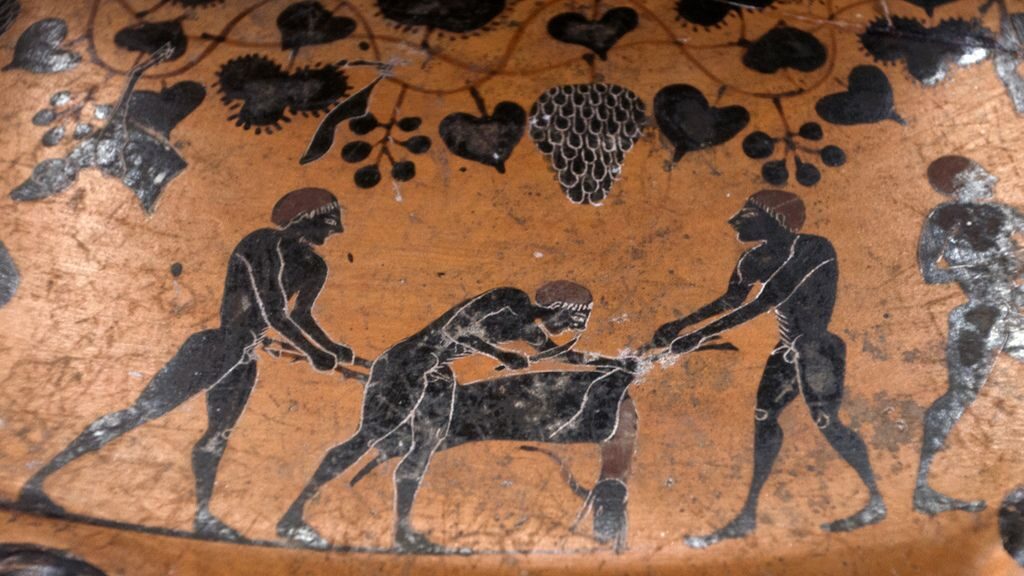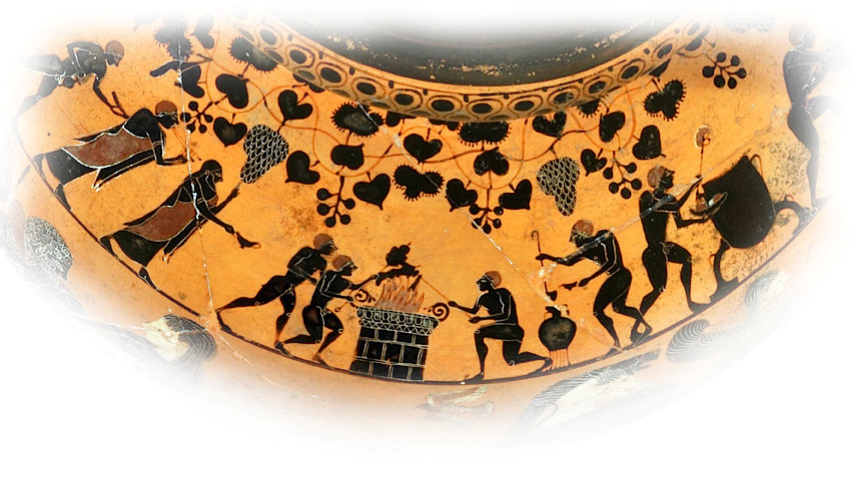
Antillo is our Bolgheri Rosso which explores the more traditional style of our area.
The local wine history is ancient, as in all of Italy. Today Bolgheri is essentially linked to international varieties, but in the past there were also other more ancient ones. Among the red ones, there were above all Sangiovese, Canaiolo Nero, Malvasia Nera, Alicante (called Cannonau in Sardinia), etc. All these varieties were always vinified as a blend, a field or cellar one (many of these are present in the Campo Giardino vineyard, which originates our wine Jassarte).
The Sangiovese was however the leading one and, with Canaiolo, it will remain the main red variety for almost the whole of the twentieth century. In fact, these will be the two most important varieties of the first DOC born in the territory, in 1983, in the production of Bolgheri DOC Rosato (rosé)
The decline of Sangiovese began in the 1980s, the decade that saw, with the early 1990s, the most radical transformations of local production. Despite this, it was still maintained with the substantial modification of the DOC Disciplinary in 1994, admitted in the production of Bolgheri red and rosé wines for a maximum of 70%. In 2011, with a new modification, it was downsized even more, admitted for a maximum of 50%.
However, the persistence in the DOC Disciplinary has not prevented its almost disappearance: today Sangiovese represents less than 1% of red varieties in the Bolgheri vineyards. We are among the few to have it in our vineyards and among the very few to use it in a Bolgheri DOC wine.
We had wanted to keep it for historical reasons. We have evidence of the presence of Sangiovese in our vineyards from the beginning of the nineteenth century, when our farm became part of the great Espinassi Moratti estate (in 1820-1821), which has left a very detailed documentation.
However, re-proposing this historic grape-territory bond is not only a nostalgic operation, but allows us to create a wine with a very well-defined character. It differs considerably from our other Bolgheri (Rute and Atis, Bolgheri Superiore), which instead represent our expression of the contemporary local production.
Antillo is our youngest Bolgheri, characterized by a great freshness and very fruity aromas. The blend with Cabernet Sauvignon accentuates its complexity and enriches the structure. Finally, a small part of Petit Verdot contributes to its liveliness, as well as giving intense spicy notes.
The 2019 vintage presented intense climatic contrasts, but in general we consider it very good. After a rainy winter, the spring started hot and dry. Then, May was characterized by rain and low temperatures, with delay in all the subsequent phases of the vines. The summer had very hot peaks, but without humidity. The harvest period was later than usual, as expected, but always characterized by good weather. We harvested the Sangiovese and the Petit Verdot on September 24th, the Cabernet Sauvignon in the first days of October. The vintage gave rise to a wine that, as usual, is very fine, pleasantly acidic, with intense fruity aromas, especially of strawberry and cherry, and spicy aromas, where black pepper prevails. The great freshness counterbalances an important structure (it is over 30 g / l of dry extract) and makes it very drinkable.
Everything of this wine concerns the vineyard: from the name (Antillo means “sunny place”, a perfect description for our territory) to the design on the label, which represents leaves and bunches of vines from an Etruscan amphora.
The picture of leaves and bunches of the Antillo label comes from the Hydria Ricci, a famous amphora from 530 BC. approximately, found in Cerveteri and kept in the National Etruscan Museum of Villa Giulia in Rome. Ricci is the name of the archaeologist who found it. What is a hydria? This name indicates the particular form of amphora that was used to contain water in ancient banquets, that was always mixed with wine before the consumption.

On the shoulder of the amphora, turning all around, there is the intertwining of vine shoots and ivy from which I designed the label of the Antillo. The vine and the ivy are the two symbols of Dionysus. Do you see that the leaves are different? Those of ivy are similar at the spade symbol of the playing cards. The vine leaves are trefoil and with dots on the edges, perhaps to simulate serration. The grape bunches are well recognized from the ivy berries.

We see a sequence of very animated actions of characters under this pergola, which perform animal sacrifices, then cook them, and draw wine from amphorae. A bearded man (on the left in the detail of the amphora below) holds the kantharos, a two-handled cup used for wine and symbol of Dionysus. With the other hand, he points to a large grape bunch above him.

It seems that this complex scene celebrates the introduction to humanity of the cultivation of the vine, with the sacrifices necessary to guarantee a good harvest. The important character could be Dionysus himself or Icarius, the first man (according to Greek myths) to receive the teaching of viticulture from the god, or Maleas, the helmsman of that myth that tells of when the Etruscans kidnapped the god of wine (which I have described in the last part of this text here). On the body of the amphora there are mythological scenes that are linked to the stories of Heracles and Achilles.
I won’t dwell on it: if you want to know these beautiful myths and their symbolisms in detail, I refer you to this short video where the director of the Villa Giulia museum tells them. If you don’t understand Italian, however, you can admire better the pictures on the amphora.